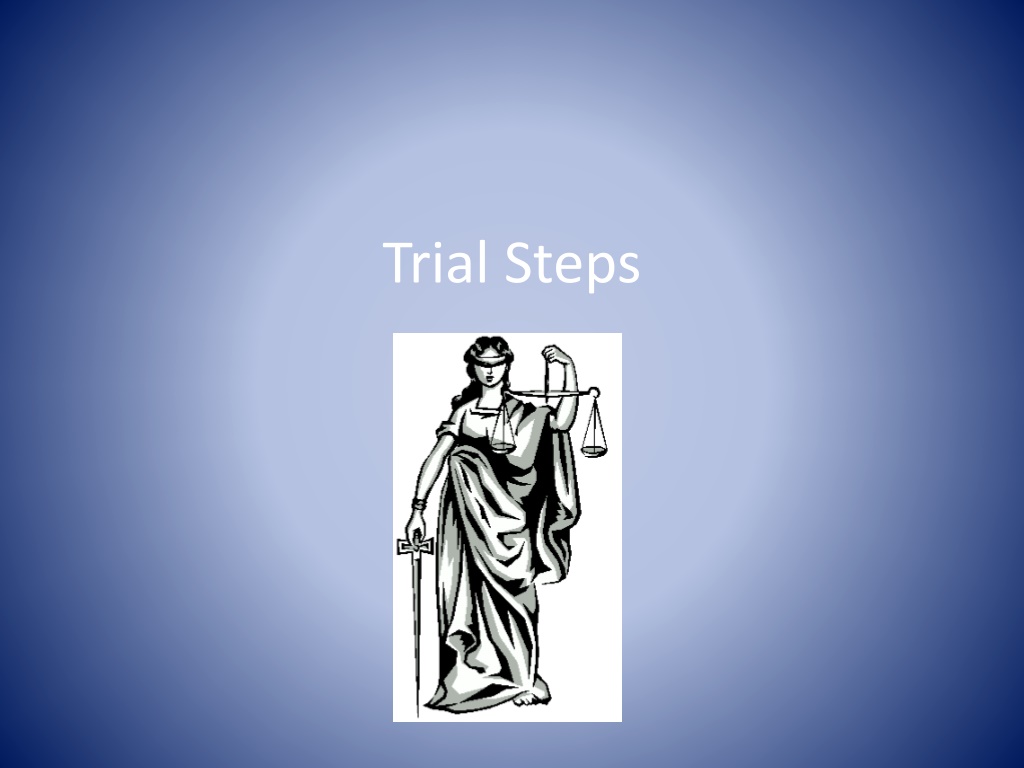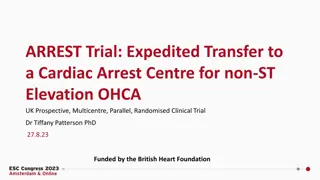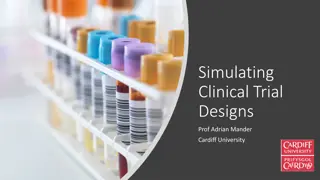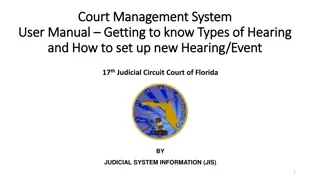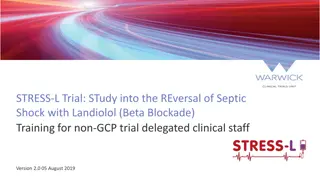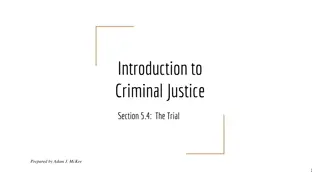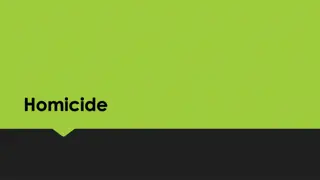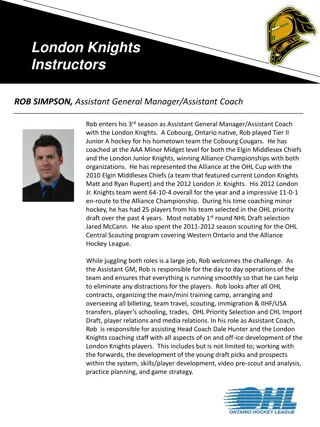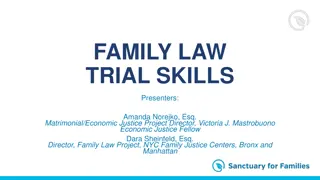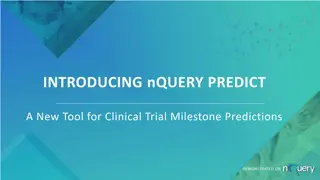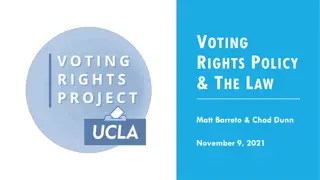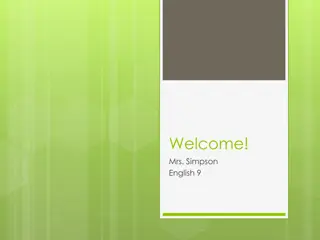The O.J. Simpson Murder Trial
The trial of O.J. Simpson for the brutal murders of Nicole Brown Simpson and Ron Goldman captivated the nation, with overwhelming evidence implicating Simpson. Despite the compelling case against him, Simpson's defense team, led by Johnnie Cochran, raised doubts about the integrity of the evidence and accused the police of framing Simpson. The trial ended with Simpson's acquittal, but he was later found responsible for the deaths in a civil trial. The case remains one of the most highly publicized trials in history, showcasing the complexities of the legal system and societal issues.
Uploaded on Sep 26, 2024 | 0 Views
Download Presentation

Please find below an Image/Link to download the presentation.
The content on the website is provided AS IS for your information and personal use only. It may not be sold, licensed, or shared on other websites without obtaining consent from the author.If you encounter any issues during the download, it is possible that the publisher has removed the file from their server.
You are allowed to download the files provided on this website for personal or commercial use, subject to the condition that they are used lawfully. All files are the property of their respective owners.
The content on the website is provided AS IS for your information and personal use only. It may not be sold, licensed, or shared on other websites without obtaining consent from the author.
E N D
Presentation Transcript
Historychannel.com Nicole Brown Simpson, famous football player O.J. Simpson's ex-wife, and her friend Ron Goldman are brutally stabbed to death outside Nicole's home in Brentwood, California, in what quickly becomes one of the most highly publicized trials of the century. With overwhelming evidence against him, including a prior record of domestic violence towards Brown, O.J. Simpson became the chief suspect. Although he had agreed to turn himself in, Simpson escaped with friend A.C. Cowlings in his white Ford Bronco on June 17. He was carrying his passport, a disguise, and $8,750 in cash. Simpson's car was spotted that afternoon, but he refused to surrender immediately. Threatening to kill himself, he led police in a low-speed chase through the freeways of Los Angeles as the entire nation watched on television. Eventually, Simpson gave himself up at his home in Brentwood. The evidence against Simpson was extensive: His blood was found at the murder scene; blood, hair, and fibers from Brown and Goldman were found in Simpson's car and at his home; one of his gloves was also found in Brown's home, the other outside his own house; and bloody shoeprints found at the scene matched those of shoes owned by Simpson. However, Simpson's so-called "Dream Team" of defense lawyers, including Johnnie Cochran and F. Lee Bailey, claimed before a national television audience that Simpson had been framed by racist police officers such as Detective Mark Fuhrman. After deliberating for three hours, the jury acquitted Simpson. He vowed to find the "real killers," but has yet to turn up any new leads. In a civil trial brought about by the families of the victims, Simpson was found responsible for causing Goldman's death and committing battery against Brown in February 1997, and was ordered to pay a total of $33.5 million, little of which he has paid. In 2007, Simpson ran into legal problems once again when he was arrested for breaking into a Las Vegas hotel room and taking sports memorabilia, which he claimed had been stolen from him, at gunpoint. On October 3, 2008, he was found guilty of 12 charges related to the incident, including armed robbery and kidnapping, and sentenced to 33 years in prison.
Step 1 Opening Statement is made by the Prosecution 1) evidence will be used to prove defendant s guilt 2) direct to jury or judge if defendant waive right to trial by jury Los Angeles ADA Marcia Clark making her opening statement to the jury in the OJ Simpson murder case
Step 2 Opening statement by Defense 1) evidence will be presented to prove defendant is innocent 2) directed to jury or judge Defense Attorney Johnnie Cochran makes his opening statement to the jury during the OJ Simpson murder case
Step 3 Examinations 1) Prosecution calls witnesses to testify against defendant; ask questions and expect answers that will prove defendant s guilt 2) this is known as direct examination LAPD criminologist Dennis Fung testifying FOR the prosecution on the DNA results from the bloody glove found on Simpson s property
Examinations (contd) 3) Defense is then allowed to question the same witness to find holes in their story and create reasonable doubt 4) this is called cross examination Simpson Defense Attorney Barry Scheck cross-examined Dennis Fung and gets him to admit procedural errors during made while collecting DNA evidence
Examinations (contd) 5) once prosecution feels that it has proven its case beyond a shadow of a doubt, it rests 6) the defense then directly examines its own witnesses and presents evidence to support its case; prosecution can then cross examine defense witnesses The Mark Fuhrman Tapes were played during his direct examination by the defense; Fuhrman pleaded the 5th Amendment to protect himself against further incrimination
Objections Made by the prosecutor or defense attorney to the judge when they feel something unfair has happened during the trial Includes relevance and leading, badgering, etc. Judge can either overrule objection and allow question to continue or sustain objection and end that particular question Judge Lance Ito listening to and preparing to make a ruling on an objection from the Prosecution during the OJ trial
Step 4 Closing Arguments 1) both sides review their main points to the jury (prosecution first, defense follows) 2) prosecution may then make a rebuttal statement in response to defense s closing argument (does not happen often) Johnnie Cochran making his famous closing argument to the jury in the Simpson case If it doesn t fit, you must acquit!
Step 5 Judge then instructs jury as to the law that is being applied in this case Judge Ito reminded the jury as to how California defines the crime of first- degree murder and to use that definition + evidence to determine OJ s guilt or innocence
Step 6 Jury then privately deliberates the evidence and announces a verdict to the court 1) to reach a verdict, the decision must be unanimous OJ Simpson is embraced by Johnnie Cochran as the jury s verdict finds Simpson not guilty of 1st degree murder in both counts
Verdict (contd) 2) If decision cannot be reached, the jury is said to be deadlocked (hung jury) and the case is dismissed (could be retried later on) Note: all it takes is for one juror to say not guilty for a deadlock to occur
